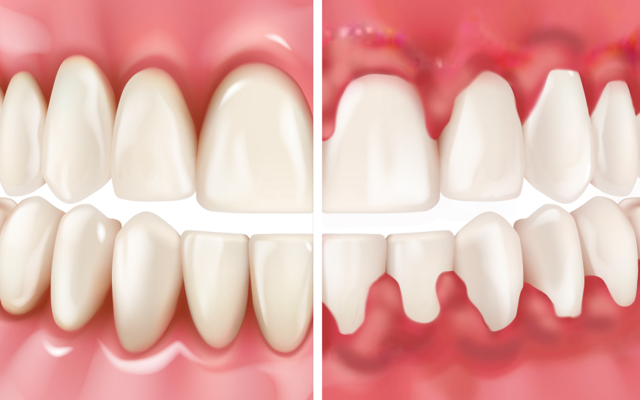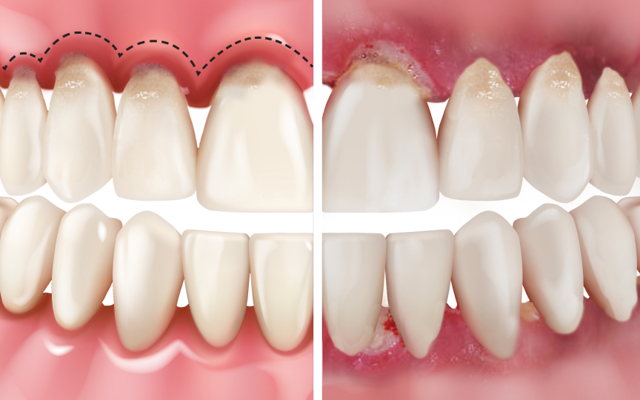What are Gum Diseases?
What are Gum Diseases?
Gum or Periodontal diseases are a wide range of diseases that affect the gums. The most common types of periodontal disease are gingivitis and periodontitis.
Healthy gums are generally pink (they may be pigmented depending on ethnicity), not swollen and don’t bleed (Fig. 1A).
Gingivitis is the mildest and most common form of periodontal disease. Inadequate oral hygiene causes accumulation of dental plaque at the junction of the tooth and the gum. As a result, the gums become inflamed, with common visual signs being redness, swelling, and bleeding. There is usually little or no discomfort at this stage. However, bleeding gums are a sign of disease, as healthy gums do not bleed, and this can lead to more serious problems. Gingivitis is reversible with professional tooth cleaning and good regular oral care at home, so it is important to seek professional assessment if gum bleeding is detected during brushing or eating (Figure 1B).

When gingivitis is unable to be controlled the inflammation progresses to periodontitis, a common chronic disease that affects at least 25% of the adult population. Periodontitis is caused by dental plaque that contains destructive bacteria that result in the loss of the supporting structures around the teeth (gum and bone). This causes the formation of ‘pockets’ around the teeth and/or recession of the gums. As is the case with gingivitis, inadequate oral hygiene is a risk factor for periodontitis, as are various systemic diseases (e.g. diabetes) and harmful habits (e.g. smoking). Genetic predisposition is a major contributor to the risk of developing periodontitis, and patients with a family history of periodontitis should have their gum health closely monitored.
Although periodontitis is not usually painful, common signs of the disease include recession (i.e.. ‘Getting long in the tooth)’ and mobility (loosening) of the teeth (Figure 1C and 1D). If untreated periodontitis may result in the loss of teeth. With appropriate professional care the condition can usually be stabilised.

